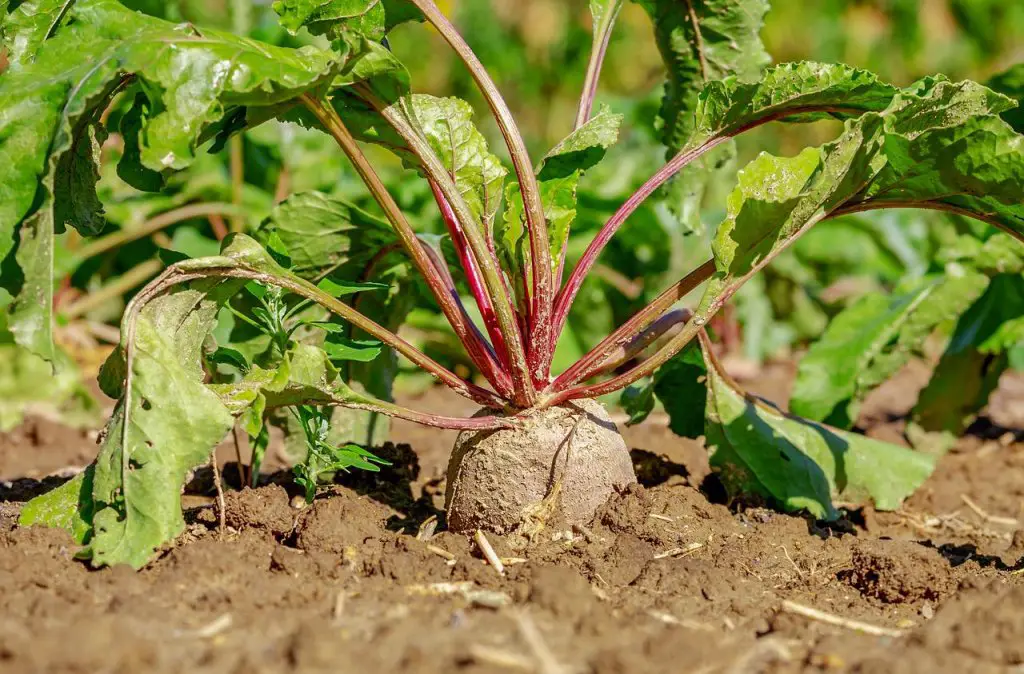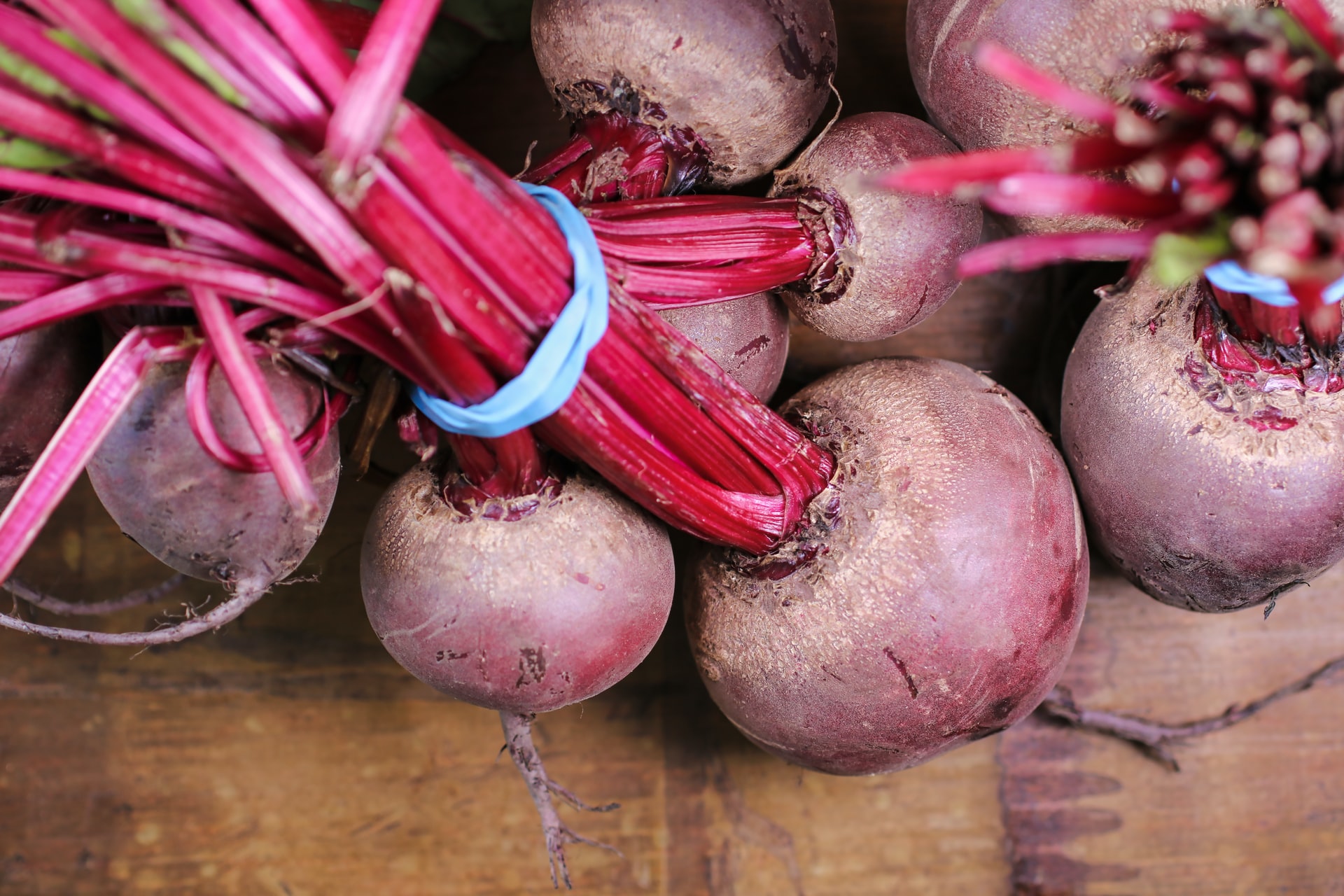You can compost beetroot, although each plant part plays several roles. Beetroot seeds that sprout out in crusty soil may produce a tough yield with tough skin that is not ideal for compost. Altogether the best resistant variety for compost includes Chioggia, Cylindra, and Pablo.
Beet also referred to as Beta vulgaris, is a root vegetable from the cultivated plants of the Amaranth family. The dark red plant with concentric rings is a rich source of vitamins, phosphorus, potassium, and antioxidants.
Take time to familiarize yourself with the critical concepts of beet plants below for a less complicated compositing process.
Table of Contents
Can You Compost Beetroot Leaves?
Adding beetroot leaves to your compost is beneficial because of their high magnesium content.
With approximately 25% of beet leaves made up of magnesium, this is an excellent source of nutrients for your compost.
It is worth pointing out that magnesium is an essential mineral that takes part in several biological processes.
When placed in your mulch, the magnesium can help eliminate chlorosis and improve the overall quality of your soil. Also, it is essential for reasonable odor control by suppressing harmful organic acids and ammonia in compost pits.
More importantly, it encourages earthworm populations and maintenance of ideal pH levels.
How Do You Compost Beetroot Leaves?
Yet, there are a couple of things to mull over when placing beet leaves in your heap. For instance, the leaves should be moist and mixed with grass cuttings to decompose faster.
To conserve warmth and moisture, you may also need to cover the compost heap with a carpet or polythene sheet. Ultimately, this approach hastens the decaying process.
If you do not have a dedicated compost container, invest in plastic sacks or large bags for a similar effect.

Some experts recommend the addition of commercial compost makers to the mulch. Depending on the compost size, a couple of handfuls are good.
Another quick accelerator to your leaves is a natural fertilizer. This is also a good organic nitrogen source and an excellent soil conditioner for your garden. Above all, ensure that your leaves pile has access to plenty of air.
Contingent on the environment, leaves can take a few years to attain optimal standards. Still, if you shred the leaves appropriately, rotate them frequently and keep the pile moist, you can have a usable product in a couple of weeks.
What part of a Beetroot Not to Compost?
Before throwing those beet craps in compost, think twice. After all, the beet variety, age, and factors in the garden soil may impinge on the decomposition process.
Beetroot seeds that sprout out in crusty soil may produce a tough yield with tough skin that is not ideal for compost. Too much boron in the garden soil may lead to hard crusty beetroots.
Baby beets prefer average soil fertility with slight alkalinity and a six-to-seven pH level.
Altogether the best resistant variety for compost includes Chioggia, Cylindra, and Pablo.
Farmers eager to grow beetroot should remember that beet crops have a tough skin coat. Hence, they should sow seeds after soaking them for approximately 15 minutes for quick germination.
Generally, the root development takes a couple of weeks, contingent on the environment and water supply.
You can grow your beet plants in loose soil or raised beds. Harvest your yield after seven to eight weeks or when they reach the size of a golf ball.
Another factor to consider is avoiding beet plants from a pickled recipe. While the beets add essential nutrients to your homemade compost, the vinegar added to pickles may be too harsh on beneficial bacteria.
Unpeeled or unchopped beets may be too hardy for the composting process. For that reason, cut them up into smaller pieces if the roots are chunky or woody.
How to Compost Beetroot: 7 Critical Steps to Follow
While composting beets can be a slow process, with the proper preparation, you can expedite the harvest time significantly.
Check out these methods to get your compost pile going in no time.
1. Choose the Best Location
Where you place your compost pile is one of the most important factors determining its success.
You will need to consider many different factors:
- Where on your property do you want to build it, and what kind of pests will be attracted (or repelled) by it?
- How much work are you willing to put into it?
First of all, remember that compost needs three main things to decompose properly: water, warmth, and air. The more closely you can approximate these conditions in your pile, the better.
Keep in mind that a shady spot may sound great, but there is a good chance it might not get enough water or heat to facilitate healthy composting.
Similarly, full sun exposure may dry the soil moisture rapidly, affecting the entire process.
You also need to consider the process of moving the pile once ready. Therefore, place your compost in the most accessible spot in your yard.
2. Pick the Best Tools
The best tools for compost depend upon your budget and the amount of space you have for a pile. In short, you do not need a bucket full of fancy tools and gadgets.
A few tools in your shed can get the job done.
A shovel, hose pipe, pitchfork, wheelbarrow, compost thermometer, and steel pails make composting easy.
3. Invest in Ideal Compost Bins
Airflow, temperature, and size of compost bin play the most crucial part in composting.
Decomposition begins when the heap temperatures reach 150 degrees Fahrenheit (66 degrees Celsius). If your container is too small, it will never get hot enough.
At least three feet wide and two to three feet deep, large bins are best for most households.
For individuals in more populated areas than rural, indoor compost bins allow you to keep the smell at bay. A compost bin made of wood panels seems like the most convenient option.
Still, plastic containers work equally well with no apparent issues recorded. You only need to keep your bins well ventilated to allow plenty of air and prevent the build-up of toxic fumes.
If you want to get creative, recycle old watering cans or plastic containers as cloches.
4. Fix your Bins with Brown and Green Matter
An ideal compost bin should contain a mix of green and brown matter. The green stuff is typically high in nitrogen, while brown organic matter provides the needed carbon for your compost.
The idea is to ensure that your compost gets all the necessary nutrients to decompose correctly. A Carbon-Nitrogen ratio of 1:30 is appropriate to start your compost pile.
5. Check on the Temperature
Breaking down organic matter by aerobic bacteria gives off heat. Conducting a temperature test comes in handy in such a scenario.
For timely and ideal decomposition, a compost pile with temperatures between 110℉ and 160℉ is perfect.
Overheating in your beetroot compost will not be an issue if you place the bin on the surface of the garden soil. Alternatively, invest in a compost aerator for better results.
6. Rotate Compost Often
You may wonder how often you should rotate your compost pile. The secret is that the timing depends on your needs and the compost material.
Turning a compost pile reduces the chance of buggy piles and makes it safer to handle. It is also a pivotal concept in getting your tasks done on time.
Some composts may not require daily rotations but three or four times weekly works magic.
Nevertheless, the rotation sequence depends on the size of the bin and the composting.
Aerobic composting happens when you mix organic matter into a pile with air to encourage microbial activity. The material will break down much faster this way.
Anaerobic occurs when you turn the pile over less frequently. It takes nearly double the amount of time for the aerobic option to decompose matter. With much slower airflow, it results in a lower rate of nutrient release in the compost.
Both methods have benefits and drawbacks, but anaerobic is better suited for beginners because of its simplicity and ease of use.
7. When is the Perfect Harvest Time?
The thought of turning your food and yard waste into nutrient-rich compost is exciting. You might have thrown those materials out in the process and forgotten about it.
Now, this is time to take that shovel and enjoy the fruits of your labor. Some people consider spring the ultimate time to harvest the compost.
You want to get the best results from the entire process. Therefore, do not rush through the procedure for undesirable outcomes.
For a novice gardener, consider that composting in enclosed areas or using a dedicated bin outdoors may produce an unpleasant odor.
A ready-to-harvest compost should have a dark brown color and earthy odor. If your compost is still light in color, it may require more time before harvesting to dry up enough for the garden.
The Takeaway
One serious setback with beetroot composts is the prolonged period before harvesting. Don’t be surprised if you don’t get it right after the first attempt, either.
Instead, pay attention to any adverse changes in your bin. Then, learn from your errors and give it another shot.

